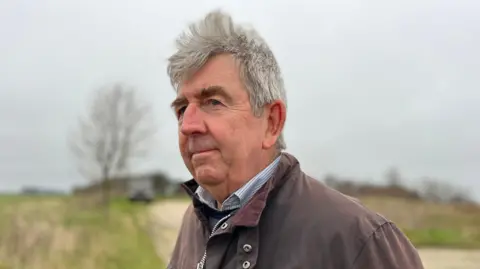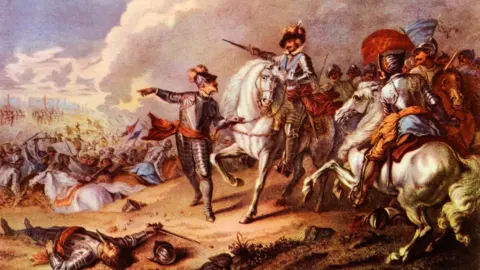Research suggests mass grave from 1600s Civil War
 BBC
BBCA retired GP has developed a theory as to where a mass grave containing the bodies of hundreds killed in a 1643 Civil War battle could be located.
Dr Norman Beale said he had used satellite imagery and older records of archaeological finds to locate the site.
The Battle of Roundway Down in the countryside overlooking Devizes is believed to have left hundreds dead - some estimate as many as 600.
Dr Beale has previously published books on local history and his latest project has been published in an academic journal for Wiltshire.
Historic England has described the Battle of Roundway Down as "one of the most interesting and dramatic battles of the First Civil War".
While Parliamentarians outnumbered Royalists at the battle, fighting saw them defeated.

Dr Beale said he had used satellite, aerial and LiDAR images during his research.
LiDAR is Light Detection and Ranging - a technology which uses laser light to create a 3D representation of the earth's surface.
All had shown "a very long line" across a field which he said was "not just a fault of the image" and which had come up "again and again".
"It ignores boundaries put in place later on by farming and woodland planted in the 1840s," he said.
"My theory is that this line represents a trench.
"This is where the chaps planting this wood in 1840 found four skeletons."
Older records Dr Beale has researched had also shown "two accidental findings of skeletons on the down from people not interested in them", he said.
Both were along the line he has spotted.
"Their significance was not seen at the time by the people who found them," he said.
"They were covered over and lost again."
 Culture Club/Getty Images
Culture Club/Getty ImagesThere is no reference to these skeletons having any clothing or items with them - something Dr Beale said was a "major clue" that they were from the battle as bodies would have been stripped, with clothing also valuable at that time.
While many bodies were buried in deeper pits after battles, Dr Beale explained that the soil on Roundway Down was shallow, so a long trench for burial would make sense.
He does not want to reveal the exact place where the line is - while there are footpaths, much of the down is private land and there is the risk of people looking illegally.
Ultimately however, Dr Beale would like to see his theory confirmed with more archaeology.
Follow BBC Wiltshire on Facebook, X and Instagram. Send your story ideas to us on email or via WhatsApp on 0800 313 4630.
